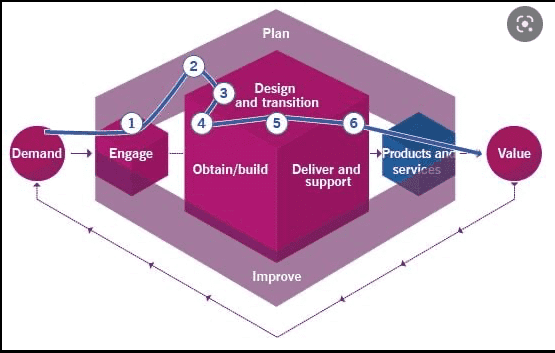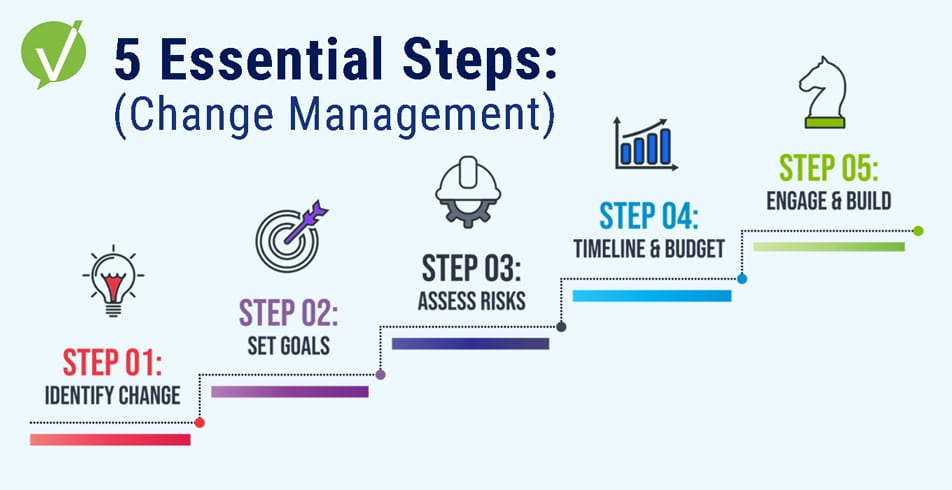IT Service Management Framework: Process Flow & Benefits
ITSM is a collection of concepts and processes. How those processes are implemented and adopted can vary. This is where IT service management frameworks come into play and, based on the needs of the business, also help determine what frameworks are best for implementing those ITSM concepts and processes.
IT service management frameworks focus on services rather than systems and support the full scope of the practice of service management. They form a framework of vendor-agnostic best practices, some of which have matured significantly over the last four decades.
There are several IT service management frameworks; ITIL, ISO 20000, IT4IT, eTOM, VeriSM, and COBIT. Frameworks such as ITIL have moved away from focusing on IT services to broader service management across all teams, such as Customer Service, HR, Facilities, and Finance. All these teams across the enterprise can benefit from adopting an IT Service Management Framework, be it for internal employees or external customers in a B2B or B2C environment.
Examples Of Relevant ITSM Frameworks
ITIL
Fundamentally ITIL® is a set of best practices on how to deliver value to your customers. It is a set of practices that impart practical and strategic ITSM guidance. ITIL4 (the latest release of the framework launched in 2019) is used as a guide to help companies improve the value of their services by focusing on co-creating business value for the end user and the company delivering those services. Although the letters IT are still in the acronym of (Information Technology Infrastructure Library), it is no longer the sole domain of IT. It can be used in any service management environment.
One of the main focuses of ITIL 4 is value streams across the whole lifecycle of the product or service. ITIL 4’s value stream definition is “a series of steps an organization undertakes to create and deliver products and services to consumers” and then fundamentally how to maximize value.
The lifecycle in ITIL 4 comprises of six core activities.
- Plan – Shared understanding of the vision
- Engage – To understand Stakeholder needs
- Design and Transition of products or services based on the plan and Engage
- Obtain/Build the products and services
- Deliver and Support products and services accordingly
- Improve – Continual improvement of products and services

ISO 20000
ISO 20000 is an international ITSM standard. It is closely aligned with ITIL in terms of its approach. Still, the big difference is that an organization can become certified against ISO 20000 as it lays out the requirements that a company needs to meet when delivering IT services. A company can be audited on those requirements.
ITIL is a set of best practices, individuals can be certified in their understanding of ITIL via exams, but organizations can’t. You can only align your business to the ITIL best practice guidelines. So there is room for both ITIL and ISO2000, and there is much crossover between the two regarding how businesses should deliver their IT Services.
ISO 20000 covers the below areas and a code of practice for ITSM that helps interpret the standard’s requirements.
- Context of the organization
- Leadership
- Planning
- Support of the service management system
- Operation of the service management system
- Performance evaluation
- Improvement
COBIT
COBIT is an ISACA (Information Systems Audit and Control Association®) Framework that supports businesses around their information technology governance. It is a bit more strategic than ITIL, which is more operational.
The framework is based on five principles for effective management and governance:
- Principle 1: Provide Stakeholder value
- Principle 2: Covering the enterprise end to end holistically
- Principle 3: Applying a single integrated framework
- Principle 4: Enabling a holistic approach
- Principle 5: Separating governance from management
These five principles enable an organization to build a holistic framework specifically around:
- People, policies, and frameworks
- Processes
- Organizational structures
- Culture, ethics, and behavior
- Information
- Services, infrastructure, and applications
- People, skills, and competencies
Summary
There are more frameworks than the three mentioned above. However, it could be argued that these are the most common in support of ITSM, and all can be implemented together or independently if a company wishes to. For example, COBIT is generally a more strategic business governance framework; ISO 20000 is a set of requirements to deliver ITSM to an international standard to which a business can be audited and certified. Finally, ITIL is a set of best practice guidelines to help align operations and services.
In a very oversimplification, companies use COBIT to connect the outcomes of their IT strategy to the organization’s business outcomes. ISO 20000 sets out the requirements to deliver ITSM to that standard, and ITIL sets out best practices around operationally delivering ITSM.
Benefits of Adopting a Framework
The benefits between each of the frameworks are different but generally come under the below categories:
- Stronger alignment between IT and the business.
- Maximizing value to end users from IT services
- Maximizing value realized to the business by supplying those IT services and ROI in those systems
- Improved service delivery and customer satisfaction.
- Reduced costs through improved utilization of resources.
- Greater visibility of IT costs and assets.
- Better management of business risk and service disruption.
- Improve and maintain high-quality information to support business decisions;
- Achieve compliance with laws, regulations, and contractual agreements
- Demonstrating to the business or customers a company’s commitment to best practices and continual improvement
Whichever IT service management frameworks and best practices you adopt can then be supported by an appropriate ITSM tool to EMPOWER Teams, ENABLE Operations and ELEVATE customer experience.













